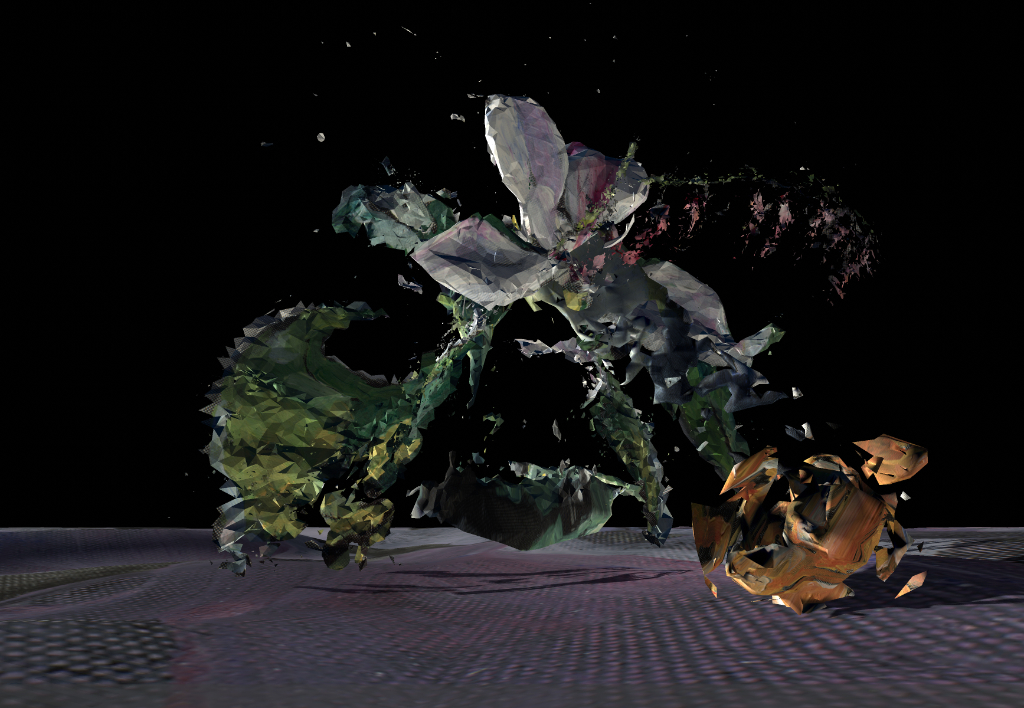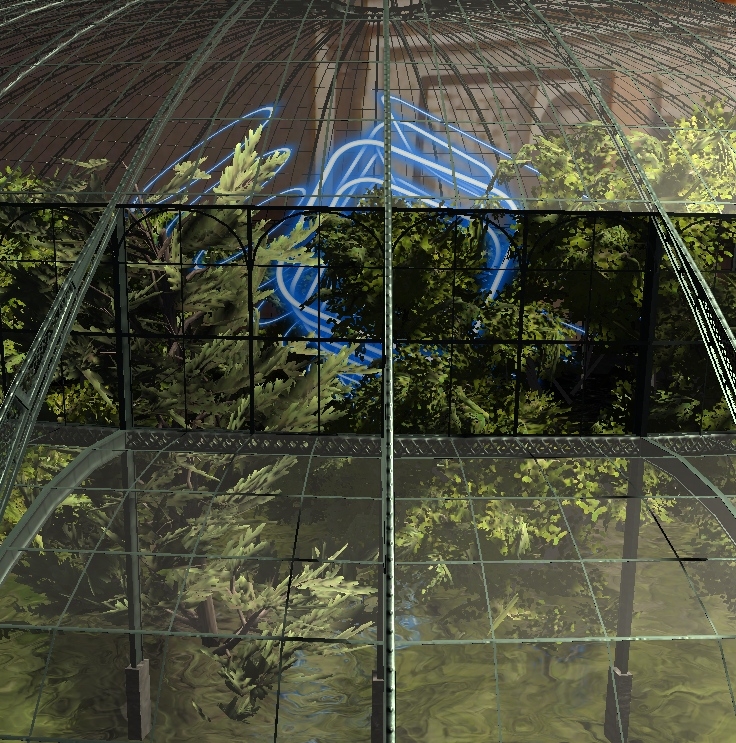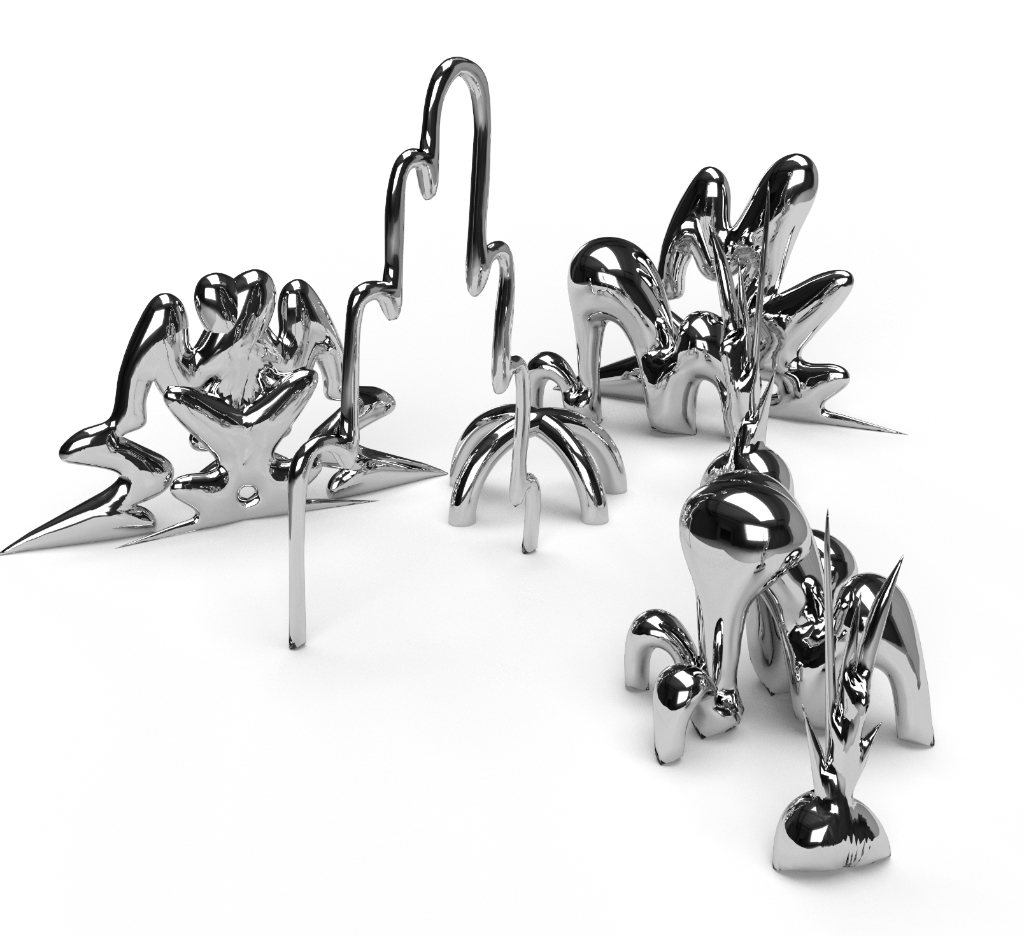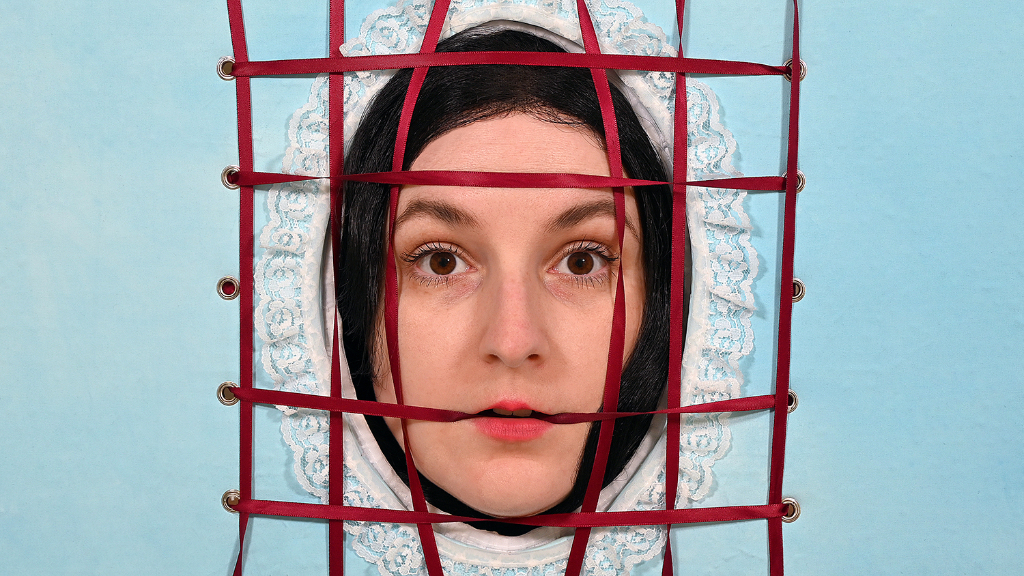Text by CLOT Magazine

Sky Fine Foods and peer to space have joined forces to present Seed Systems: Speculative Ecologies in XR Art. This hybrid exhibition will be presented at SOMA Berlin. It will show new works created by six international artists (Alison Bennett, Nicholas Delap, Matthew D. Gantt, Mohsen Hazrati, Nadine Kolodziey and Lauren Moffatt) who use augmented and virtual realities to explore speculative approaches to future human-nature relationships, shaping spatial and sonic occurrence of growth and foliage. These artists have united their expertise in virtual world-building and plant knowledge, shaping alternative ecologies and biologies.
Inspired by gardens that carefully construct spaces of experience and discourse, the exhibition considers how new media can be used to reimagine ecological systems and facilitate mindful, inclusive futures. Planting seeds of reflection and growth raises questions of what we can do at a small scale to initiate patterns for the greater system.
The project, initiated by STYLY and supported by Radiance, is curated by Peggy Schoenegge (peer to space) and Miriam Arbus (Sky Fine Foods). The presented new XR artworks lend a critical edge to neo ecologies, inviting visitors to interact with new digital media and participate in an exchange of ideas and discourse for potential futures. Inspired by gardens that carefully construct spaces of experience and discussion, the exhibition considers how new media can be used to reimagine ecological systems and facilitate mindful, inclusive futures.
The curators tell us they didn’t know each other personally before this collaboration began, though they have known about each other’s work and projects for many years. As curators focused on new media, digital art and XR, they have worked with similar artists and know the same communities. They share so many perspectives and visions that coming together was a very fluid process.
Our shared interests and intentions bring a lovely cohesion to our collaboration, which enriches us both very much. We have been able to challenge and provoke each other’s assumptions and perceptions – a vital aspect of this conceptual undertaking. Peggy lives in Berlin, whereas I am usually based in Toronto – and this local knowledge has been instrumental in organising a physical exhibition, Miriam comments.
On the idea of Neo-ecologies, they also share that these create environmental awareness that is turning from an individual lifestyle into a social movement. Movements such as Friday for Future underline this, illustrating how humans impacted nature and the ecosystem, which now turns into a problem for the whole world. The current climate crisis has become the basis for a new global identity that is the focus of the exhibition SEED SYSTEMS. By presenting six artworks as positions of reflection, we open up a space for discussion. The artists elaborate on the current state of nature and combine these with technologies to bring them together to create a future vision, offering an opportunity to connect in new ways, Peggy explains.


Right: Urtica Portal, Nicholas Delap (2022), AR experience
Peggy also gives us a great insight into how the extended realities media used in the exhibition facilitate or convey the main ideas from the show: Our time and future are digital, which is currently not quite tangible for many. The exhibition builds a space for interaction and discussions that enables the visitors a conscious handling of both technology and the topic of neo ecologies. On the one hand, you can experience the digital, its potential and its characteristics. On the other hand, the experience leads into the artistic discussion of the meaning of the virtual in the future and environmental topics such as the meaning of nature for our living. The artists elaborate on this from different perspectives, showcasing various points of view. Nicholas Delap examines histories of folklore and the nettle plant – a mysterious and overlooked plant whose medicinal qualities make it one of the most potent and widely available healing tools. Matthew D. Gantt interconnects responsive sound elements with the visual, engaging with Brian Eno’s notion of generative electronic music as bottom-up gardening – emergent structures flourish with no predicated finale. Nadine Kolodziey explores how to plant something digital and intangible in a physical space while playfully questioning future interactions within our technologized environment. In addition, Mohsen Hazrati and Lauren Moffatt immerse us in virtual environments. While Mohsen Hazrati creates virtual bioluminescence with a metaphorical approach to understanding wine as an alternative source of energy, which he considers in the context of Iranian culture, Lauren Moffatt establishes cycles of flourishing and decay in nature, examining how different virtual and physical ecosystems become linked by human movement and behaviour.
One of the main discussion topics around organizing extended realities exhibitions is the challenges the curators are faced during the different stages of the curatorial process. Miriam highlights that there are always small bugs, due to the inherent nature of the technology itself. Something that hasn’t changed in recent years and is part of the technology itself. Also, how to bridge the gap between the ease of using the tech gear and experiencing the art itself can be challenging. But at the same time, these challenges are part of working with new media and something that sharpens the understanding of these applications. Finally, it must be said that factors such as screen resolution, battery life and size of the gears are improving. Especially the development of stand-alone headsets like the Oculus Quest enriches our work because the setup requires much less equipment and is, therefore, less complex. This progress will continue, and the devices will become increasingly user-friendly and suitable for the mass market, Miriam continues.


Peggy agrees about the technical improvements, which greatly help her work as a digital art curator. In addition, creating a user-friendly environment is probably the most challenging part of exhibiting new technologies such as VR or AR. For example, dealing with visitors who either have lots of experience interacting with new media or those who have never worn a headset. These are very different needs that must be considered when wanting to appeal to the broadest audience possible. When we curate exhibitions like these, it is about accessibility to enable an appropriate experience. This means, for example, that the STYLY user interface is intuitive and, therefore, low-threshold. In addition, there are always assistants to help put on the glasses. Projections of the virtual worlds help to convey the first impression. The aim is to integrate aids and build bridges to the virtual world, she tells us.
When asked what they expect to bring to the audience, apart from the most apparent reflection about our planet and relationship to nature, maybe more at the experiential level, they both agree that experiencing new visions in new ways can be deeply inspiring. By showing XR art, I hope to shift our visitors’ expectations and assumptions by immersing them in each artist’s visions. I hope visitors can gain an experience that inspires feelings of connecting with nature and each other. A sense of calm and beauty and also protectiveness, Miriam says. While Peggy adds that she also hopes that visitors will discover the possibilities of VR and AR and realize their potential. This form of perception will increase and influence our understanding of reality. We have to be aware of that.
On final thoughts about how they envisage those futures that new media may be able to help us reimage, Miriam says that our world is already experiencing the ecological crisis of climate change. Seed Systems takes a hopeful perspective, positioning the idea that new digital concepts/tools can help make necessary structural changes. And that by immersing into artists’ visions, we can shake up our assumptions and dream of necessary changes. With technologies, we can develop systems that aim for a balanced approach to labour and our environment, moving away from extraction-focused practices and towards systems that integrate regeneration for environments while facilitating inclusive and fair workers’ rights.
Peggy concludes that technologies themselves will play an even more critical role. Our everyday lives are already dominated by digital media. These developments will continue to advance and grow in importance. Accordingly, a competent approach to media and media awareness will become indispensable in the future.
Seed Systems will open at SOMA Berlin, also launching online via STYLY and running from September 9 to 30, 2022.






